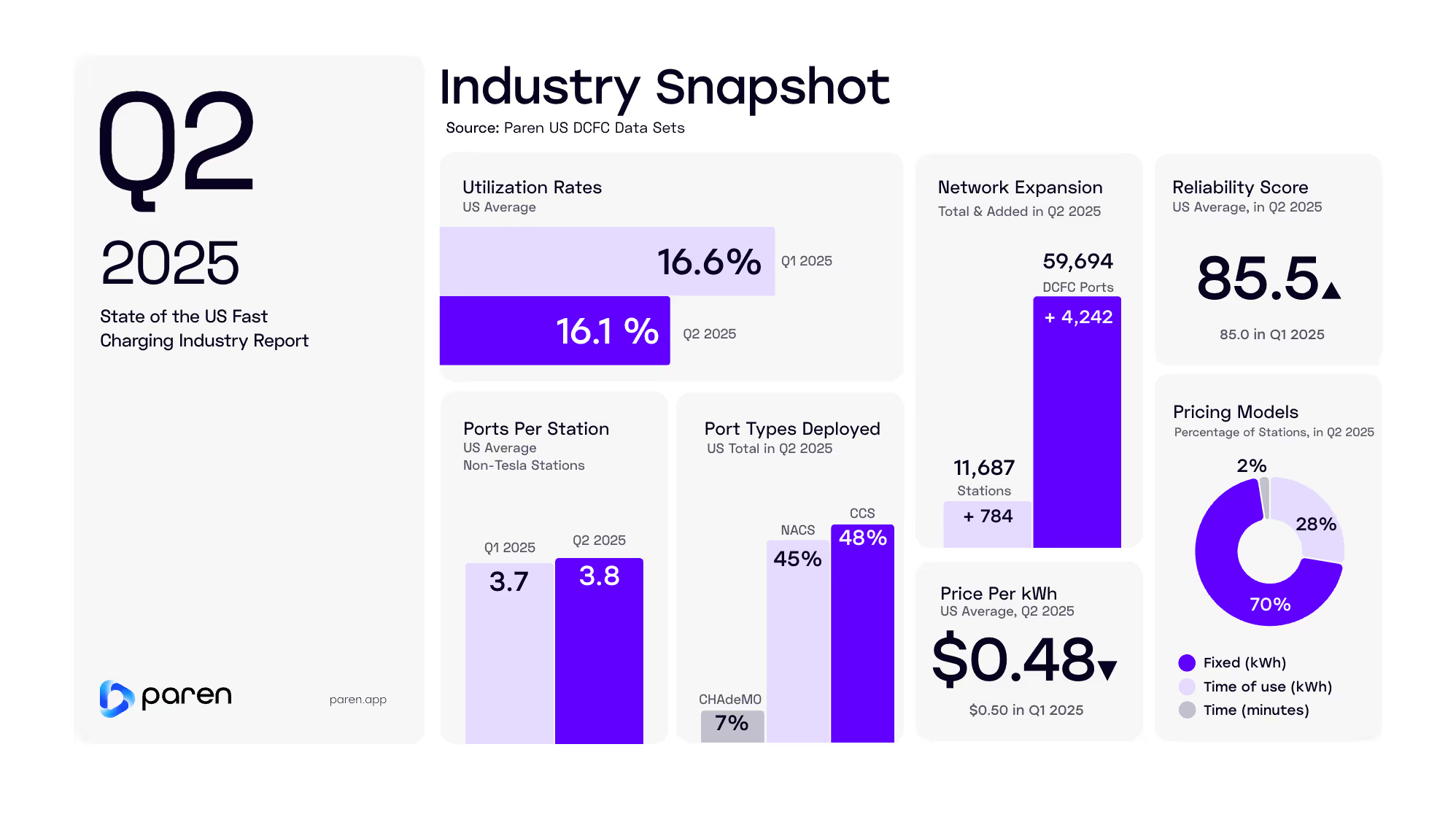Paren Q2 2025 U.S. EV Charging Report
.avif)
U.S. DC fast charging (DCFC) infrastructure growth is on track to surpass previous yearly highs despite government pushback, stations are “growing up” with more ports and high-power chargers, improved reliability, and more predictable pricing, according to Paren's just released State of the Industry Report: U.S. EV Fast Charging - Q2 2025.
The report, which provides in-depth analysis of the evolving electric vehicle fast charging landscape, also includes the first in a series of forecasts: predicting a 19% increase in year-over-year port deployment across the U.S. in 2025, as many new “Charging 2.0” companies begin to execute their growth plans and deploy fast charging stations at an unprecedented rate.
“2025 is going to be a record year for deployment of DC fast charging ports — and 2024 was already the highest year on record,” said Loren McDonald, chief analyst at Paren. “Charging 2.0 players are deploying new — and larger — stations at a breakneck pace.”
Report Highlights:
- Bigger, Faster, More Reliable: Record deployments of high-powered chargers, with major operators opening 8-12+ port stations at a blistering pace. Despite the NEVI pause and other factors, 2025 will be a record year of fast charging deployment — our estimate of nearly 20% YoY increase in new ports.
- Utilization warning signs: The national average utilization rate declined to 16.1% from 16.6% in Q1 due, in part, to seasonality and warmer weather. In a potential warning sign for the industry, however, we observed declining utilization rates across some unexpected markets — suggesting that new charger deployments may be beginning to outpace demand, particularly in regions with lower EV adoption.
“Paren’s Q2 2025 report highlights the steady buildout of the public charging network and intricacies of deploying charging stations ahead of demand and with future-ready capacity,” said Heiko Schmidt, VP, Network Strategy & Consumer Offering at Mercedes-Benz HPC North America. “While this approach may apply short-term pressure on utilization, we believe that charge point operators who deliver a strong customer experience — prioritizing speed, reliability, seamless payment and pricing transparency, premium amenities, and safe, well-lit locations — will earn long-term loyalty from EV drivers.”
- Reliability is improving: U.S. fast-charging reliability rose 5.3% year-over-year as older hardware is replaced and more reliable new hardware is deployed at a significant scale.
- Pricing strategies continue to evolve: Average national cost dropped to $0.48/kWh from $0.50/kWh, driven by increased competition, introductory pricing, and a growth in time-of-use pricing which offers reduced prices during off-peak hours to drivers.
- In the quarter, 366 stations nationwide transitioned from fixed to TOU pricing, one-third of which were in California. 29% of stations with either fixed or TOU pricing adjusted their rates in Q2, either up or down. Notably, despite the overall national decline, California saw an average price increase of 3 cents among stations that changed their pricing since last quarter.

Download the Report/Join our Webinar:
- The full report is available at https://www.paren.app/reports.
- Join our free webinar where I and Paren CTO and co-founder Bill Ferro will review the key findings and implications of this quarter’s report.
- Wednesday, July 30 at 1 pm EDT/10 am PDT
- Register here
By Loren McDonald, Chief Analyst — Paren